Introduction: A Dominant Force in British Art
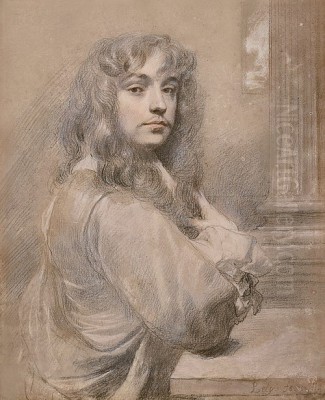
Sir Peter Lely stands as one of the most significant figures in the history of British art, particularly during the latter half of the seventeenth century. Born in the Netherlands but spending the vast majority of his prolific career in England, Lely rose to become the pre-eminent portrait painter of his time, skillfully navigating the turbulent political landscape from the final years of Charles I, through the Interregnum, and into the flamboyant era of the Restoration under Charles II. His style, heavily influenced by the Flemish master Sir Anthony Van Dyck, evolved into a distinctively rich and elegant Baroque manner that perfectly captured the opulence and sensibilities of the Restoration court. Appointed Principal Painter to the King, Lely dominated the London art scene, running a highly efficient studio that produced a vast number of portraits, shaping the visual identity of the era's elite. His influence extended beyond his own lifetime, setting a standard for portraiture that subsequent generations of artists would both emulate and react against.
Early Life and Continental Formation
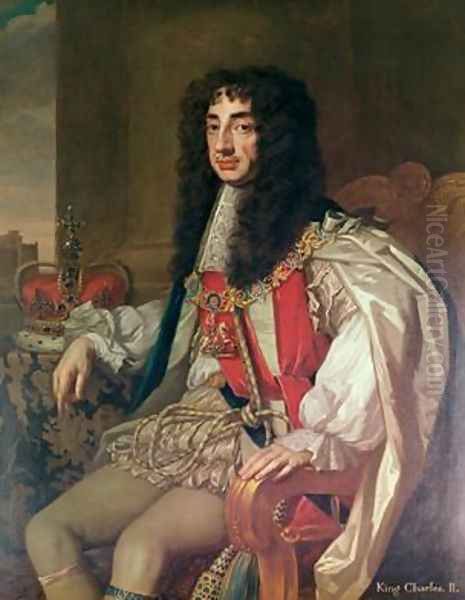
Peter Lely was born Pieter van der Faes on September 14, 1618, in Soest, Westphalia (now part of Germany), a region then garrisoned by Dutch troops. His father was an officer in the army of the Elector of Brandenburg. The name "Lely," which he later adopted, is said to have derived from a lily carved on the gable of the house where his father was born in The Hague. This Dutch heritage was crucial to his artistic development. He received his initial training in Haarlem, a major centre of the Dutch Golden Age of painting. Sources suggest he may have been a pupil of Pieter de Grebber around 1637. De Grebber was a respected painter of historical subjects and portraits, known for his classicizing tendencies within the Dutch Baroque style. This training would have exposed the young Lely to the technical proficiency, the rich use of colour, and the sophisticated compositional strategies prevalent in Dutch art, providing a solid foundation for his future career. The artistic environment of the Netherlands, with masters like Rembrandt van Rijn and Frans Hals pushing boundaries, undoubtedly shaped his early understanding of painting.
Arrival in England and Establishing a Reputation
Lely made the pivotal decision to move to England in the early 1640s, possibly around 1641 or 1643. This was a period of profound upheaval, marked by the escalating conflict between King Charles I and Parliament, which would soon erupt into the English Civil War. Crucially for Lely's career trajectory, the dominant court painter, Sir Anthony Van Dyck, had died in London in December 1641. Van Dyck's death left a significant vacuum in the market for high-status portraiture, creating an opportunity for talented newcomers. Lely arrived with a skill set honed in the Netherlands, ready to adapt to the English market. Initially, his work included not only portraits but also pastoral landscapes and historical or mythological scenes, often featuring nude figures in the Italianate and Dutch traditions. These early works show his versatility and ambition beyond mere face-painting. By 1647, he had gained sufficient standing to be made a freeman of the Painter-Stainers' Company in London, a significant step in establishing his professional identity within the city's artistic community. During these early years, he competed for patronage with native-born artists like William Dobson, who served as a court painter to Charles I during the King's time in Oxford but died young in 1646.
Navigating the Interregnum
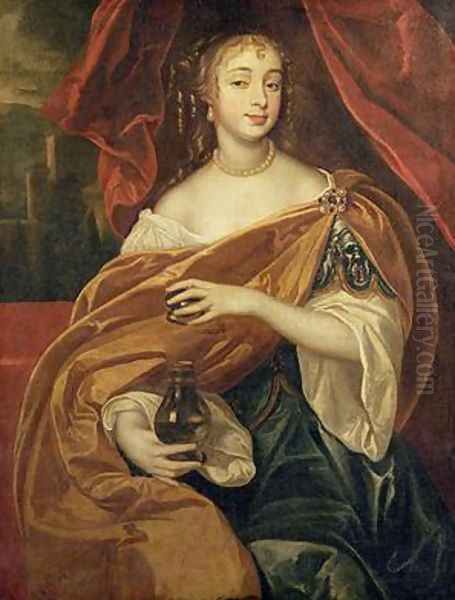
The execution of Charles I in 1649 and the subsequent establishment of the Commonwealth and Protectorate under Oliver Cromwell presented a challenge for artists accustomed to royal patronage. However, Lely proved remarkably adept at navigating these changing political tides. While the demand for lavish court portraiture diminished, a new clientele emerged among the Parliamentarian gentry and figures of the new regime. Lely continued to work successfully throughout the 1650s. His most famous commission from this period is arguably his portrait of Oliver Cromwell himself. According to a well-known anecdote, Cromwell instructed Lely to paint him "warts and all," demanding a realistic portrayal rather than flattering idealism. The resulting portrait is indeed a powerful and unvarnished image, capturing Cromwell's stern and resolute character. This demonstrated Lely's ability to adapt his style to suit the sitter and the prevailing mood, moving away from the overt elegance associated with the former court when necessary. During this period, the miniature painter Samuel Cooper was perhaps the most highly regarded portraitist, known for his psychological acuity, but Lely maintained a strong practice in large-scale oil painting.
Principal Painter to the Restored Monarchy
The Restoration of the Monarchy in 1660, with the return of Charles II, marked a turning point in Lely's career, catapulting him to unprecedented levels of success and influence. The new court culture was one of exuberance, glamour, and a renewed appetite for the arts and display. Charles II, having spent his exile in continental Europe, particularly France and the Netherlands, was keen to establish a court that rivaled others in splendour. Lely, with his sophisticated style rooted in the continental Baroque and his proven ability, was perfectly positioned to meet this demand. In 1661, Charles II appointed him Principal Painter in Ordinary, granting him an annual pension of £200, the same amount Van Dyck had received. This official recognition cemented his position as the leading painter in the kingdom. He became the favoured artist of the King, the royal family, the court nobility, and the wider aristocracy. His studio was soon inundated with commissions, making him not only famous but also wealthy. Shortly before his death, in January 1680, Charles II conferred a knighthood upon him, recognizing his long service and pre-eminence in the arts.
The Lely Style: Defining Restoration Elegance
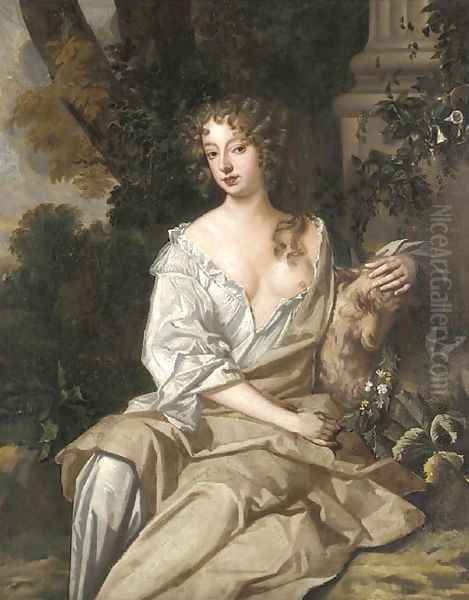
Sir Peter Lely's mature style became synonymous with the visual culture of the Restoration court. While the influence of Van Dyck remained palpable, particularly in the pursuit of aristocratic elegance and the frequent use of certain compositional formats, Lely developed his own distinct mannerisms. His colour palettes became richer, often featuring deep reds, blues, and golds, applied with a fluid, confident brushwork. He excelled at rendering the textures of luxurious fabrics – shimmering silks, lustrous satins, and rich velvets became hallmarks of his portraits, contributing significantly to their opulent effect. His female portraits, in particular, defined the era's aesthetic. Sitters were often depicted in languid, slightly theatrical poses, sometimes dressed in loose, informal drapery that hinted at classical attire while also allowing for a fashionable décolletage, reflecting the relaxed morals and sensuous atmosphere of Charles II's court. While sometimes criticized for a certain uniformity in pose and expression, Lely possessed a remarkable ability to convey an air of effortless grace and aristocratic hauteur. His male portraits, while perhaps less flamboyant, effectively captured the confidence and authority of the era's statesmen, naval commanders, and courtiers.
Masterpieces and Famous Series
Lely's vast output includes many iconic images of the Restoration period. Among his most celebrated works are two significant series of portraits commissioned by members of the royal family. The "Windsor Beauties," painted in the 1660s, likely for Anne Hyde, Duchess of York, depicts prominent ladies of the court renowned for their beauty. These portraits, now primarily housed at Hampton Court Palace, exemplify Lely's skill in portraying female allure, characterized by sleepy eyes, full lips, and elaborate hairstyles, often set against atmospheric landscape backgrounds. Famous sitters in this series include Barbara Villiers, Duchess of Cleveland (one of Charles II's mistresses), and Frances Teresa Stuart, Duchess of Richmond and Lennox. Another important series is the "Flagmen of Lowestoft," commissioned by James, Duke of York (later King James II), to commemorate the naval victory over the Dutch at the Battle of Lowestoft in 1665. These thirteen portraits depict the admirals and senior captains who served under the Duke. Housed today at the National Maritime Museum in Greenwich, these works showcase Lely's ability to convey masculine authority and naval prowess within his characteristically elegant style. Beyond these series, individual portraits like those of King Charles II, Queen Mary II (as Princess and later Queen), James II (when Duke of York), the playwright Aphra Behn, and the famous royal mistress Nell Gwynne stand as defining images of their time. Works like Susannah and the Elders (Burghley House) and Nymphs by a Fountain (Dulwich Picture Gallery) also attest to his earlier engagement with narrative subjects.
The Lely Studio: A Portrait Factory
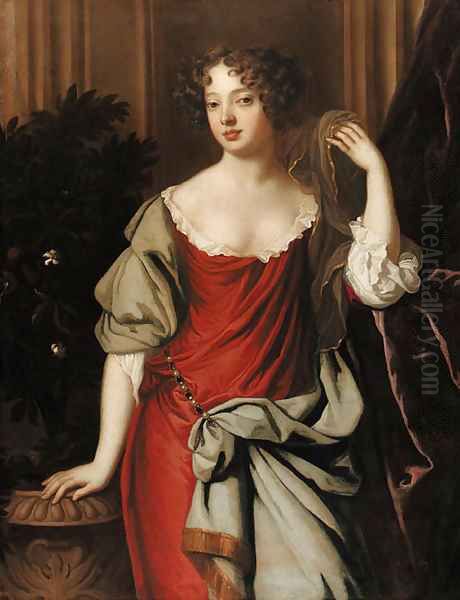
The enormous demand for Lely's portraits necessitated a highly organized and productive studio system. Located in Covent Garden, his workshop became something of a portrait factory, employing numerous assistants and apprentices to help meet the constant stream of commissions. Lely's working method typically involved him painting the sitter's head and perhaps sketching the main outlines of the pose during sittings. The remainder of the portrait – the drapery, background, hands, and other accessories – would often be completed by his studio assistants, working from established patterns or 'postures'. This division of labour allowed for rapid production and ensured a degree of stylistic consistency across his output, contributing to the recognizable "Lely look." However, it also inevitably led to variations in quality, with some works exhibiting a more mechanical or formulaic execution than others entirely by the master's hand. Among those known to have worked in his studio or been heavily influenced by his practice were artists like John Greenhill, Willem Wissing, and potentially younger painters like Henrik Sonnius and Pieter Gerritsz van Roestraten who specialized in drapery or still-life elements. This studio model, while efficient, contrasted with the more personal approach of artists like Samuel Cooper.
Lely the Connoisseur and Collector
Beyond his activities as a painter, Sir Peter Lely was one of the most important art collectors and connoisseurs in seventeenth-century England. He amassed a truly remarkable collection, reflecting both his wealth and his deep engagement with the art of the past. His collection included paintings by renowned Italian masters such as Titian, Tintoretto, and Paolo Veronese, as well as Flemish giants like Sir Peter Paul Rubens and his own predecessor, Van Dyck. Even more significantly, Lely assembled an extraordinary collection of prints and drawings, numbering perhaps as many as 10,000 items. This included works by Michelangelo, Raphael, Giulio Romano, Polidoro da Caravaggio, and many others. Each drawing was meticulously marked with his collector's stamp ("PL"), which remains a distinguished mark of provenance today. His collection served not only as a status symbol but also as a vital resource for study, both for himself and potentially for his pupils. The posthumous sale of his collection, beginning in 1682, was a major event in the London art world, dispersing masterpieces and significantly influencing subsequent British collecting habits. His collection and patronage also played a role in popularizing the mezzotint technique in England, facilitating the reproduction and dissemination of his portraits through engravers like Abraham Blooteling, Wallerant Vaillant, and John Smith.
Contemporaries, Rivals, and Successors
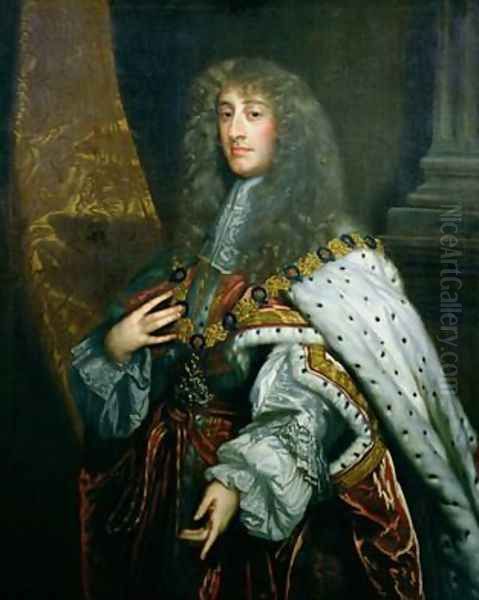
During his period of dominance, Lely operated within a vibrant London art scene. While he largely eclipsed most rivals after the Restoration, he was not without competition or interaction with other artists. The aforementioned Samuel Cooper remained the leading miniature painter until his death in 1672. Mary Beale emerged as a successful professional portraitist during the same period, a rare achievement for a woman at the time; she knew Lely and seems to have observed his techniques, adapting elements into her own softer style. Towards the end of Lely's life, a formidable new rival appeared in the form of Godfrey Kneller. Kneller, German-born and trained in the Netherlands and Italy, arrived in England in 1676. Younger, energetic, and possessing a slightly more robust and direct style, Kneller quickly gained favour. An anecdote tells of a painting competition arranged by Charles II between Lely and Kneller in 1678, which supposedly showcased Kneller's speed and skill, signalling the rise of the new star who would eventually succeed Lely as the leading court painter. Other contemporaries included figure painters like Antonio Verrio and Louis Laguerre, who specialized in large-scale decorative schemes, and artists like John Riley, who initially worked in a manner close to Lely's before developing his own more sober style, eventually becoming Principal Painter jointly with Kneller after Lely's death. Michael Dahl, a Swedish painter who arrived in the 1680s, also became a significant portraitist working in the late Baroque tradition established by Lely and Kneller.
Later Years, Death, and Enduring Legacy
Sir Peter Lely remained active and highly sought after until the very end of his life. He died suddenly, reportedly while painting the portrait of the Duchess of Somerset, on December 7, 1680 (New Style). He was buried at St Paul's Church, Covent Garden, close to his studio. A monument was later erected to him in the church, although both the church and the monument were destroyed by fire in 1795. Lely's death marked the end of an era in British portraiture. For nearly two decades, he had been the undisputed master, defining the visual representation of the Restoration elite. His influence was profound and lasting. His studio system provided a model for later large-scale portrait practices. His stylistic conventions – the poses, the emphasis on luxurious fabrics, the particular blend of elegance and sensuality – set the standard for British portraiture for decades. Artists like Kneller, Riley, Wissing, and Dahl built upon the foundations he laid, adapting his Baroque manner to suit the changing tastes of the late seventeenth and early eighteenth centuries. Even in colonial America, echoes of his style can be discerned in the work of early painters such as Thomas Smith. While later critics, particularly from the eighteenth century onwards, sometimes dismissed his work as repetitive or superficial, lacking the psychological depth of a Rembrandt or the effortless grace of Van Dyck, his historical importance is undeniable. He skillfully captured the essence of his age and created a body of work that remains central to our understanding of Restoration England.
Conclusion: The Face of an Era

Sir Peter Lely's career represents a remarkable story of artistic adaptation, ambition, and success. Arriving in England as a talented Dutch painter, he navigated the complexities of the Civil War and Interregnum before seizing the opportunity presented by the Restoration to become the dominant artistic figure of his time. As Principal Painter to Charles II, he crafted the defining images of the era's royalty, aristocracy, beauties, and heroes. His style, a rich and ornate Baroque derived from Van Dyck but infused with his own sensibilities, perfectly mirrored the glamour and confidence of the Restoration court. Through his prolific output, highly efficient studio, and significant activity as a collector, Lely profoundly shaped the course of British art. While his successor, Godfrey Kneller, would adapt this style for a new generation, Lely remains the quintessential painter of the Restoration, the artist who gave visual form to one of the most vibrant and distinctive periods in British history. His portraits continue to offer a compelling glimpse into the world of Charles II and the faces that populated his court.